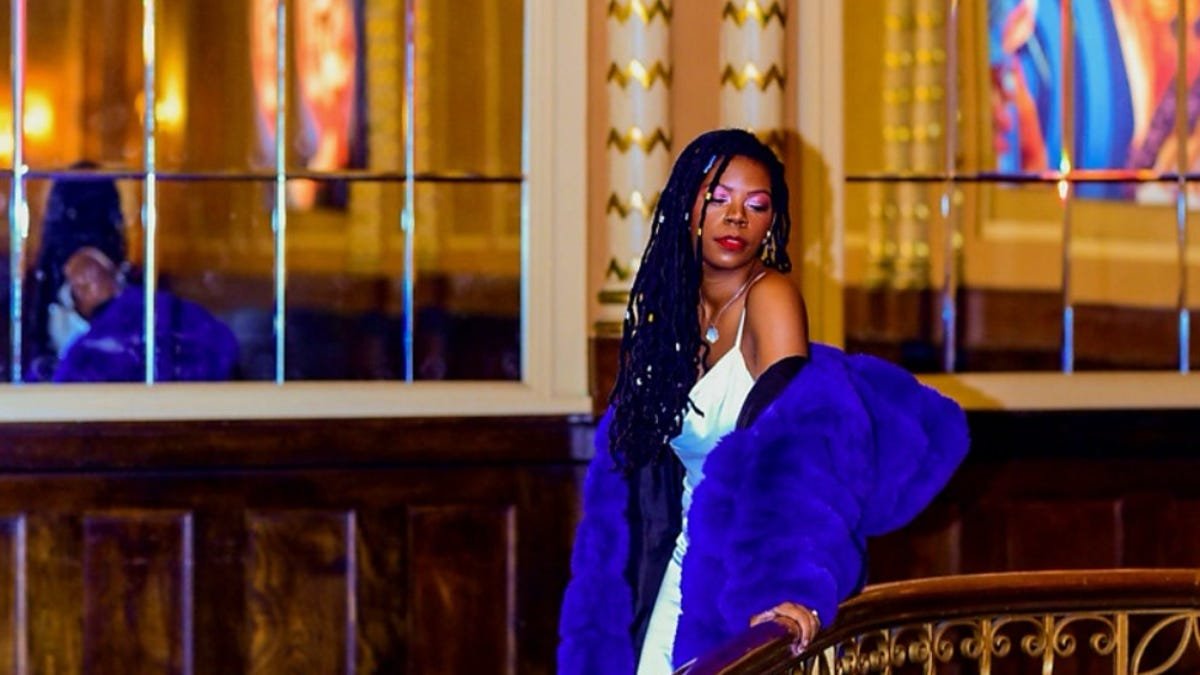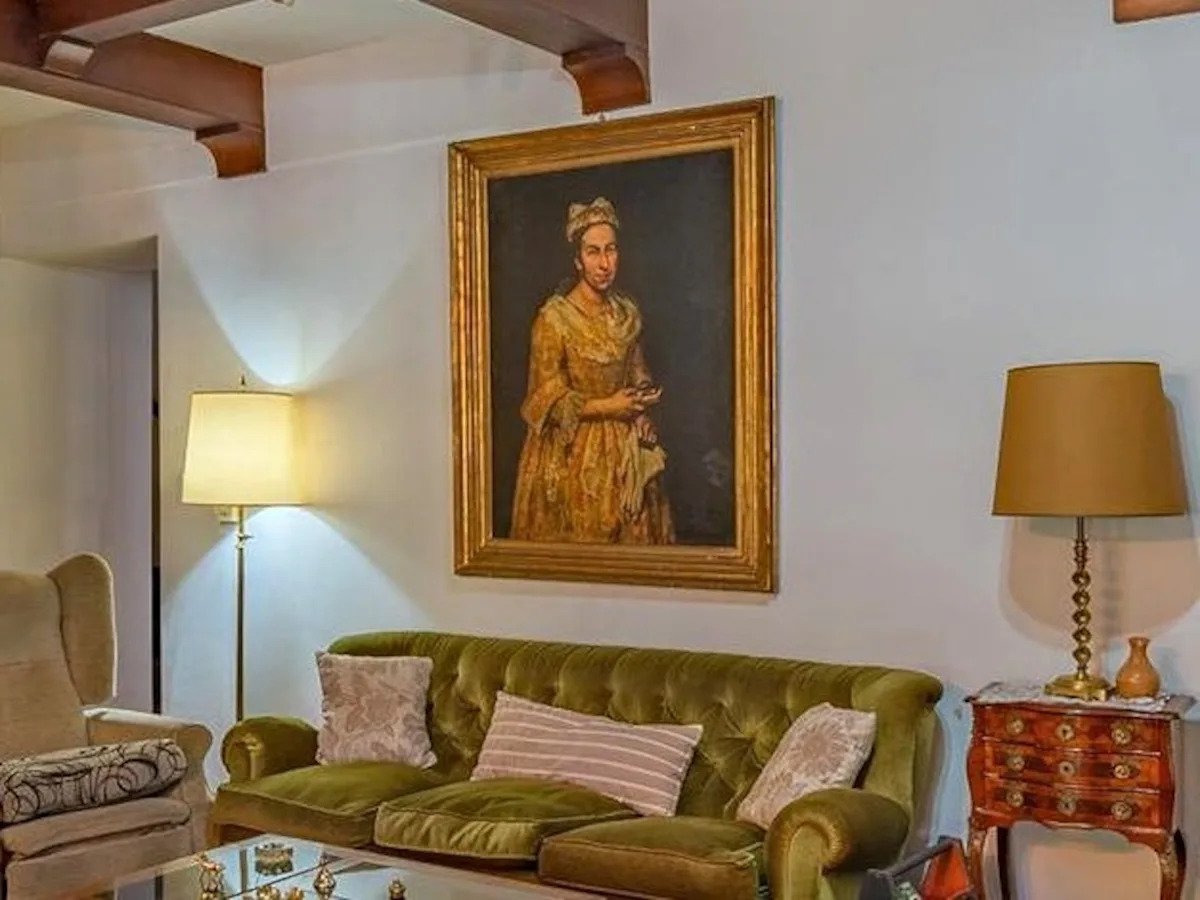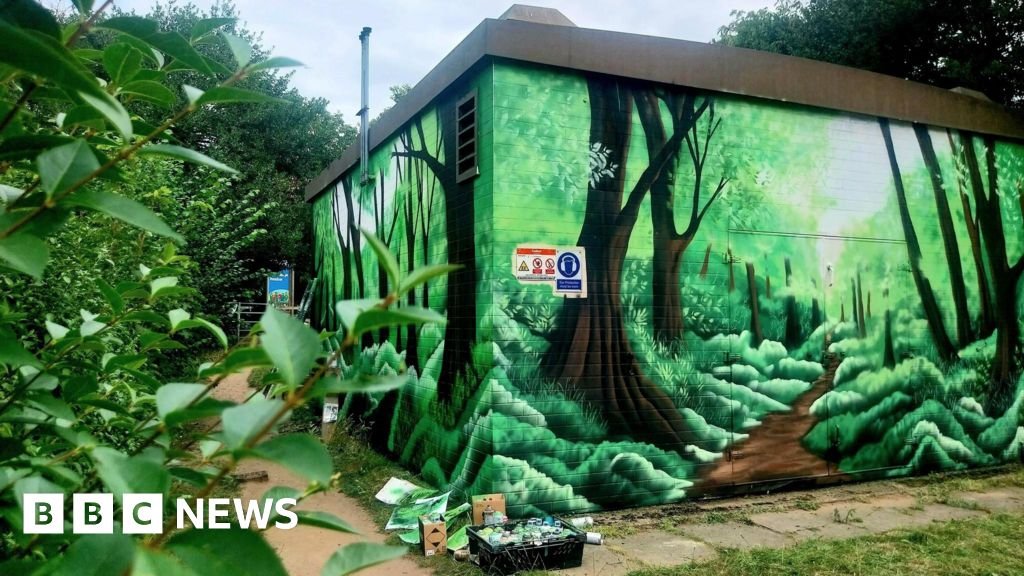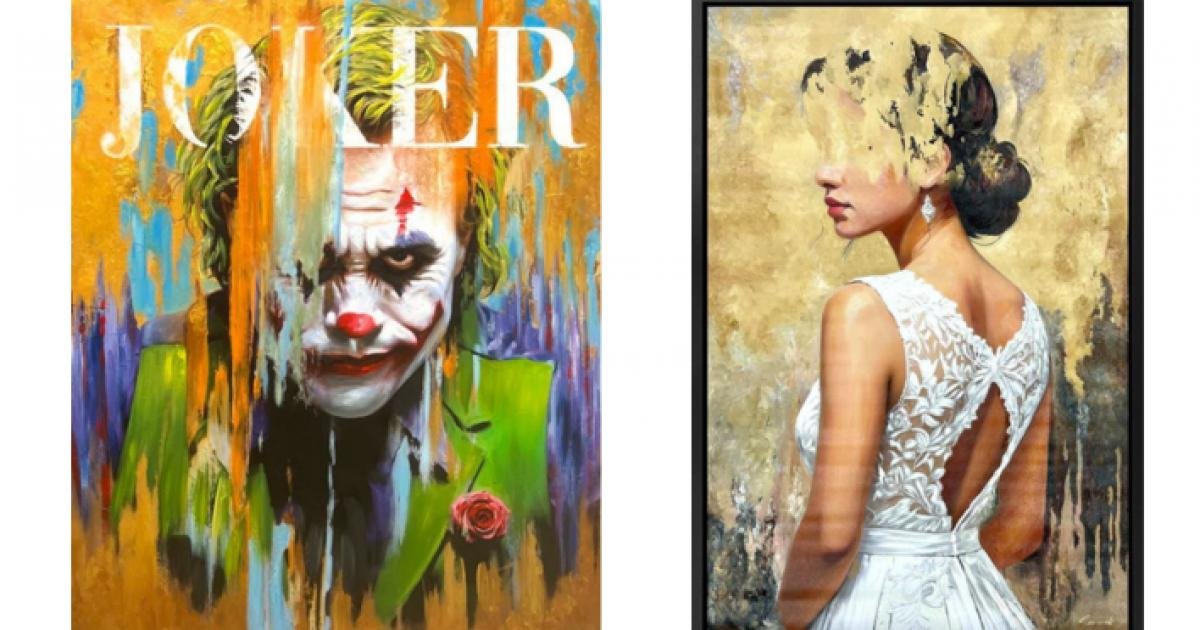
Photo-Illustration: The Cut; Photos: Alice Carrière
The weather forecast the day my mother died called for an isolated tornado, which is the best description of her I’ve ever heard. My mother, the artist Jennifer Bartlett, brought her own atmosphere with her wherever she went — a cloud of perfume, a cloud of smoke, a cloud of utter fucklessness. She was loud in a way that came not just from the amplitude of sound waves, but from an orogenic pressure that brought the hilt of her desires — for something to stop or continue, to be given or leave her in peace — thrusting up through the moment, separating what was not about her (not much) and what was about her (much more).
My mother was catapulted to art-world fame in 1976 with a piece called Rhapsody. In the New York Times, the art critic John Russell called it “the most ambitious single work of art to have come my way since I moved to New York.” Rhapsody was enormous, in size and ambition. It was over 150 feet long, comprised of 987 one-foot-by-one-foot steel plates with a baked enamel grid on them, a medium she had invented, inspired by New York City Subway signs. When it later hung in the Museum of Modern Art atrium, it took up three walls; it will once again take up space at MoMA next month when the museum reinstalls Rhapsody as part of a celebration of my mother’s life happening on September 20. She had wanted to make a piece that “had everything in it.”
After hitting it big and quickly becoming one of the most widely exhibited artists of her generation, my mother bought her first mink coat, slapped on giant sunglasses and lipstick that was always crooked, sprayed on too heavily the Fracas de Robert Piguet perfume she ordered directly from Paris, and was dubbed “the Joan Collins of Soho” by New York Magazine. She was beautiful in a smudged way, crooked bottom teeth behind imperfect lipstick, short dark hair and crystalline blue eyes that had an unexpected softness to them. Her best friend, the artist Elizabeth Murray, described her as “sort of a brat. She was outspoken, and she seemed very sure of herself, and she made people angry — especially men.” My godmother, Paula Cooper, described her as “a monster pain.” She was the center of attention at all times, but the way she tugged on the spotlight seemed protective as if she were trying to cover herself with the glare.
There was a vulnerability about my mother that revealed itself precisely in the moments most marked by crassness, by will, by stubbornness, a clumsiness to her attentional gluttony. She was extremely guarded. There was no one she opened up to. And she couldn’t figure out affection. I received the occasional awkward pat as if she were checking to see that all parts of me were still there, adjusting or confirming me, but never reaching me. When we did hug, she would cough out a laugh as our bodies touched, or a sarcastic “oh” would loop out of her, and I felt it, an overstuffed pillow between us, blocking the contact, the connection. She had zero ability to speak about emotions and often bit off the moment with the glib announcement that she “felt like working” or “felt like not feeling,” amputating the sentiment at the joint. Her feelings went into her work, which was also where she wrestled with the recovered or implanted memories of ritualized childhood sexual abuse and murder that haunted her. The New York Times quoted her as saying she “developed an infinite capacity for work and none for reflection.” She worked all the time, and it was all she wanted to do.
As a child, I would stand in her studio and look up at the massive canvases: a wall of fire devouring a tartan square, a skeleton, the shape of a house made up of thousands of small dots. She had a real human skeleton in the studio named Lucy. I would hold Lucy’s excarnated hand, caressing the bumps and curves of her fingers in a morbid mother-and-child tableau. I wondered at the fact that my mother could casually own a human skeleton. Just because she wanted it, she could summon a whole dead human to hang out in the studio, to be named and petted and painted. My mother was powerful. She could take over someone’s remains, own the imprint they had left on the world, the imprint the world had left on them, and make that imprint even bigger, immortal. When my friend’s father, a war photographer, was crushed by the second World Trade Center tower on 9/11, my mother was given the film from his camera, and she rendered his final moments in paint, huge and bright.
She could make me everlasting, too. When my mother became the only Westerner commissioned to paint a temple ceiling in Japan, she let me put paint on the soles of my feet and walk across a square of paper. The idea that my feet would be walking across a ceiling in a temple in Japan made me feel like my mother could perform magic. The feet that would only be tiny for a fraction of time, those feet would run forever across a ceiling where prayers were being chanted. I looked at the square of paper after the painting was done and saw for a brief moment how my mother had seen me, that my mother had seen me.
Her book, a fictionalized autobiography called History of the Universe, was her history, which made her the universe. It had been edited down from 2,000 pages to a modest 197. In it, she described everything about everyone she knew, everything she thought, all the products she used — from Crest toothpaste to Clinique face powder — and every single detail about her physical appearance. I was grateful for her near-compulsive meticulousness and her self-absorption. Because she believed that every thought she had was interesting, I got to know my mother; I was allowed access to her through the only way she knew how to communicate — her work. The only thing she did not describe were emotions, unless she was listing synonyms for rage. What did something so vast and powerful and mysterious as the Universe have to do with feelings? One line read, “I wish I didn’t think I was the only person in the world.” I couldn’t tell if it was the most arrogant thing I had ever heard, or the loneliest. The only person in the world had no one to talk to, nothing to counteract the persuasion of their own imaginings. The only person in the world got to invent reality, but was alone to suffer the consequences of its incoherence. And what about the child belonging to the only person in the world? Just another invention.
In her work, my mother was obsessed with the archetypal house image — a square with a triangle on top. My mother rendered this silhouette in ink, in pastel, in Testors paint, in charcoal, in oils. It was big, it was small, it was crosshatched or comprised of dots. It was chopped in half, it was dissolved, it was splintered. It was repeated over and over, as if she were trying to learn the meaning of the word, decipher its secrets. These houses were made inside houses that were themselves works of art.
My mother created magnificent homes, and living in them, it was as if I lived inside her mind. Everything had been designed especially for her and her alone — the space broken, built, bent to her particularities and peculiarities of gesture, inclination, tendency. Her house, 134 Charles Street in New York City, had many horizontal surfaces — daybeds, kitchen counters, spacious hearths, hardwood floors on which she could assume her typical recumbent pose: on her side, arm cocked to prop up her head while smoking or reading or drinking her white wine. She spread herself out on these domestic plateaus like Manet’s Olympia, and life lived itself around her. She had transformed 134 Charles Street from a factory into a West Village fortress, an irresistible nexus of strangeness, luxury, and niche functionality — the architecture of my mother’s desires. Everything around us had her in it. She designed her own jewelry (a gemologist who rode a unicycle and had worked with the Hope Diamond was her collaborator) and her own very uncomfortable furniture. She designed and commissioned our drinking glasses, handblown cylinders so light you could hardly tell there was anything in your hand. The concept behind them was to create something as close to nothing as possible but still be functional. I hated them because I couldn’t stop breaking them. And I had to use them because they were part of the fundamental routine of my life, which meant that destroying them would also be a fundamental routine of my life. Even the most utilitarian aspects of our lives were impossible to negotiate — conceptualized beyond utility, aestheticized beyond the physics of living.
My mother’s muchness — of style and ambition — was matched by a grandiose but remote generosity. Our house became a repository for people who had fallen on hard times. Whether dying of AIDS, escaping an abusive parent or partner, facing poverty, or descending the spiral of manic depression, people would show up at our house and stay. Some, like my uncle Roy, left only when they died. For all the distance she kept, the boundaries were porous. In this house, one could not tell the difference between fantasy and reality, art and object, parent and child. There were no locks on the doors, not even the bathrooms. The taps of the sink and bathtub and shower were marked with C and F, for chaud and froid, French for hot and cold. People unfamiliar with the house often scalded themselves when they washed their hands. The house forced you to move differently. It could be a bewildering, even harmful, place if you didn’t know its rules.
My mother spent her days in the studio listening to audiobooks and her nights upstairs reading and drinking white wine. I spent much of my childhood alone in my room, reading and writing. I didn’t have many friends. I didn’t know how to behave around my peers. I listened to my own audiobooks all the time, too — to go to sleep at night, while I showered, while I did my homework, while I played in my room, and on my way to school. The words slid down my ears and lit me up, helping me recognize where everyone else ended, and I began. Stories taught me the right words for things; if I had the right word for things, everything could feel okay. I had mastery over these spaces, these rooms built out of language. When I wasn’t listening to audiobooks, I thought in the third person. As I walked down the street to school, I would think, “She is walking down the street. It is raining. The rain falls on her jacket.” I turned myself into words and my life into a story. Only when my mother lost her story, her history, could we find our way to each other.
Over the final 11 years of her life, my mother suffered from dementia. When she was first diagnosed, she made an enormous plate piece simply titled Dementia. On each plate, she wrote out the word — in cursive, in dots, in all uppercase, in all lowercase, over and over, as if she were trying to use that brutal word to soothe herself, as if, through the force of her work, she could transform calamity into comfort. The disease progressed, but she never fully lost herself. She continued to recline on her side, propped up on one elbow, smoking cigarettes, asking questions, and issuing edicts from her bedroom. She also found parts of herself that had been buried. She became tender, curious, and hugged me unreservedly, her hands sometimes gripping the hair at the nape of my neck. She asked me how I was. She asked me how she could help me, and even though she no longer could, her inquisitiveness felt nuclear, decimating and generative — a simple question able to raze 30 years of distance, able to raise an un-raised child. I learned more about who she was as the semantic information of her life was erased.
Three weeks before her death, she was diagnosed with acute myeloid leukemia and given two weeks to live. I took care of her as she died, and one night, squirming in her bed, she asked to hold my hand. I gave it to her, and she squeezed it. She asked me if there was somewhere else she could go. I knew well that feeling of wanting to be out of body and mind, so I said:
“Do you want to go to the beach?”
“Yes,” she said, her eyes closed.
“Do you want to go swimming in the ocean?” I asked.
She had always loved the ocean.
“Yes,” she said.
“Is the water calm or wavy?” I asked.
“Calm.”
“Is it dark blue or can you see to the bottom?”
“I can see to the bottom.”
I asked her how far out she was going to swim.
“As far as I can go,” she said.
“Do you want someone to swim with you?”
“No,” she said.
“You like being alone, don’t you?”
“Yes.”
“Are you going to swim back to shore?”
“No.”
“What are you going to do out there alone in the ocean?”
“Stay there and have a really nice time.”
She died three days later.
I washed her body, put her in a hot-pink Ronaldus Shamask dress, and doused her in the requisite high dose of Fracas perfume. I lifted her cooling wrist to my nose and smelled the fragrance on her skin one last time. Seven days later, we spread her ashes in the ocean. I lowered myself from the sailboat into the Atlantic and swam out, her ashes held aloft. I poured the ashes into the water and hesitated. We were as far out as we could go. I didn’t want to leave her, but she needed to be alone.
Adapted from Everything/Nothing/Someone by Alice Carrière. August 2023. Spiegel & Grau.







